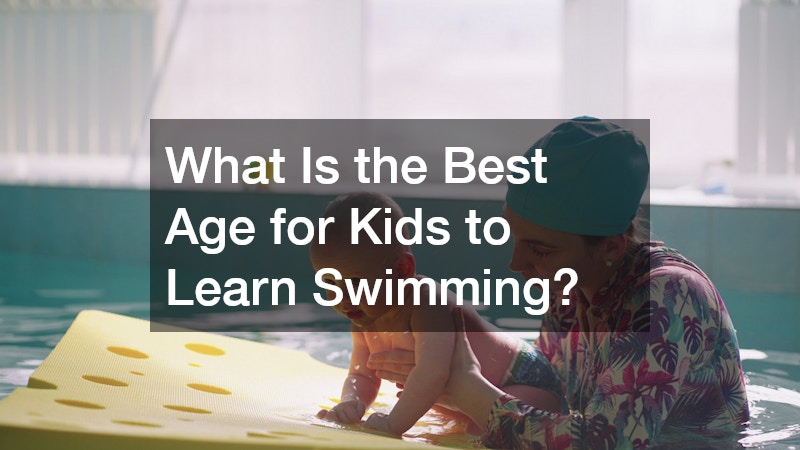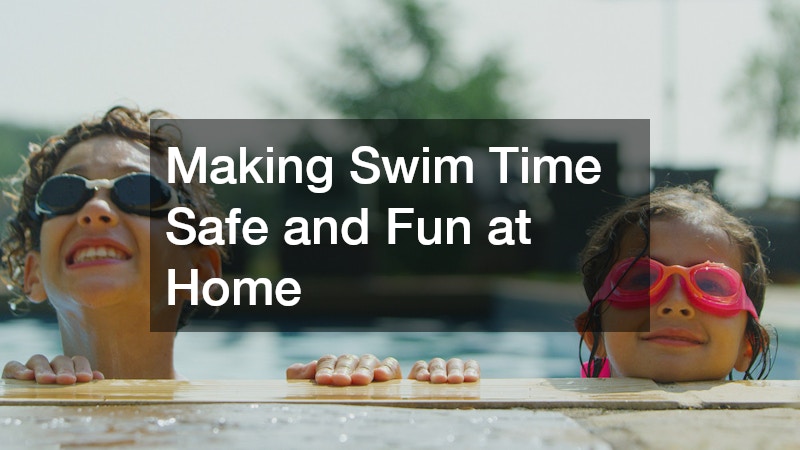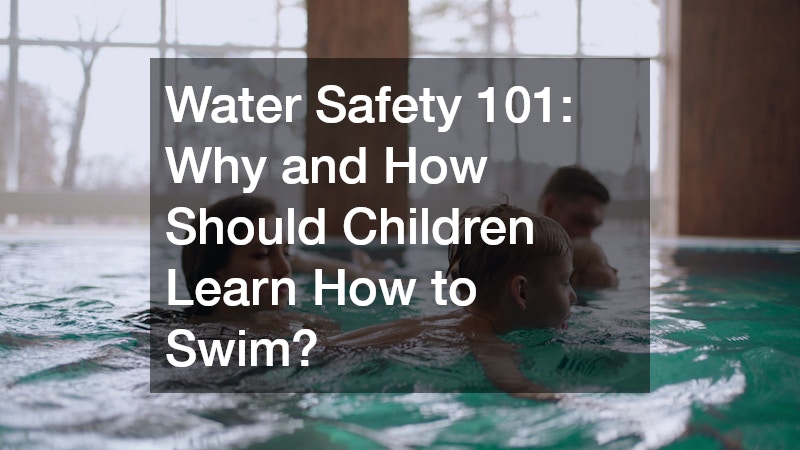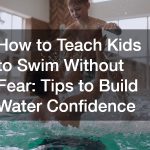
As a parent or guardian, your child’s safety is your top priority, especially around water. Drowning remains one of the leading causes of unintentional injury-related deaths among children, making water safety a crucial life skill. One of the most effective ways to protect children is by teaching them how to swim at an early age. Not only does swimming help prevent accidents, but it also contributes to a child’s physical, mental, and emotional development.
In this article, we’ll explore why and how children should learn to swim, the ideal age to start, tips for parents, and how to overcome common challenges. Let this guide empower you to make informed choices about your child’s aquatic education.
Why Should Children Learn to Swim?
Swimming is more than just a recreational activity. For children, it provides an essential survival skill that can save lives. Here are key reasons why learning to swim is non-negotiable:
- Water Safety and Drowning Prevention
- According to national health statistics, drowning ranks as one of the top causes of accidental deaths among children between the ages of 1 and 14. One of the most effective ways to lower this risk is by teaching children how to swim.
- Through lessons, kids gain essential safety skills such as floating, treading water, and navigating toward the edge of a pool or shoreline, increasing their chances of staying safe in emergency situations.
- Building Confidence and Reducing Fear
- Children who learn to swim become more comfortable around water.
- Learning in a safe environment helps reduce anxiety and increases self-assurance.
- Enhancing Physical Development
- Swimming strengthens muscles, improves coordination, and supports cardiovascular health.
- It’s a low-impact exercise suitable for growing bodies.
- Promoting Social and Emotional Well-Being
- Group lessons promote teamwork and cooperation.
- Accomplishing swimming milestones boosts self-esteem and discipline.
- Enjoyment and Access to Opportunities
- Swimming opens the door to other water-based activities like snorkeling, surfing, and kayaking.
- Children can safely enjoy vacations, pool parties, and beach outings.
What Is the Best Age for Kids to Learn Swimming?

Knowing the right time to introduce swimming lessons can be tricky. Experts recommend early exposure but stress the importance of readiness over strict timelines.
- Infants (6 months to 1 year): Parent-child aquatic classes focus on water acclimation and bonding rather than formal instruction.
- Toddlers (1-3 years): Water safety skills like floating, blowing bubbles, and basic kicks are introduced.
- Preschoolers (3-5 years): Many children are developmentally ready for structured lessons, including stroke fundamentals.
- School-Aged Children (6+ years): These kids can grasp more complex skills, strokes, and safety techniques.
The American Academy of Pediatrics (AAP) supports swim instruction starting as early as age 1, depending on the child’s readiness and comfort.
How to Start: Tips for Parents and Guardians
Introducing children to swimming doesn’t have to be overwhelming. Here are practical steps to guide you:
- Choose the Right Swim School
- Look for certified instructors with experience in teaching children.
- Class sizes should be small enough to allow individual attention.
- Facilities should be clean, warm, and equipped for child safety.
- Observe a Class Before Enrolling
- Watch how the instructor interacts with kids.
- Assess how engaged and comfortable the children appear.
- Prioritize Water Safety Skills First
- Before learning strokes, focus on floating, breathing control, and getting in and out of water safely.
- Reinforce Lessons at Home or the Local Pool
- Practice outside of class to build familiarity.
- Always supervise swim time, even with trained swimmers.
- Be Patient and Encouraging
- Avoid forcing a child who is fearful.
- Celebrate progress, no matter how small.
Overcoming the Fear of Water: Helping Children Gain Confidence
Some children may experience fear or anxiety around water. It’s important to approach their concerns with empathy and encouragement.
- Start Slowly and Stay Positive
- Begin with short water play sessions in a shallow pool or bathtub.
- Use toys or games to make water fun.
- Model Comfort in Water
- Let your child see you enjoy swimming.
- Participate in water activities together.
- Enroll in a Gentle, Child-Centered Program
- Many swim schools offer fear-reduction classes designed for anxious children.
- Use Consistent Praise and Patience
- Never punish or shame a child for their fear.
- Celebrate even small steps, like getting their face wet or floating with assistance.
The Long-Term Benefits of Teaching Your Child to Swim Early
Swimming isn’t just about the short-term goal of water safety. The skills children learn in the water can serve them for life.
- Physical Health: Swimming promotes strength, flexibility, endurance, and lung capacity.
- Mental Focus: Following instructions and mastering techniques improve cognitive abilities.
- Social Development: Swim classes teach cooperation, listening, and patience.
- Safety Habits: Children become more alert and cautious around water bodies.
- Lifestyle Skills: Opens up a world of sports and recreational opportunities.
According to research, children who swim consistently from an early age achieve physical and cognitive milestones faster than their non-swimming peers.
Why and How Should Children Learn How to Swim?
In answering the question “why and how should children learn how to swim?”, we need to connect both motivation and methodology.
Why:
- Children learn how to swim to safeguard themselves in water environments, build resilience, and promote healthy lifestyles.
- It prepares them to face unexpected water-related situations.
How:
- Start early with age-appropriate lessons.
- Choose certified instructors and swim programs.
- Reinforce lessons at home with consistent practice.
- Approach with encouragement and make it fun.
Swimming is a gift that lasts a lifetime, and when introduced properly, it can become a beloved skill rather than a chore.
What to Look for in a Good Swimming Program for Kids
Choosing the right swim school can make all the difference in your child’s learning experience.
Checklist for Parents:
- Instructors have certifications in CPR, first aid, and swim instruction (e.g., Red Cross, YMCA).
- Programs offer progressive levels based on ability, not age alone.
- Classes focus on both safety and skill development.
- Positive reinforcement and child-friendly communication are used.
- Clean, safe facilities with shallow areas and appropriate pool temperature.
Don’t hesitate to ask for references or reviews before enrolling your child.
Reinforcing Water Safety Beyond Swimming Lessons
Even after your child becomes a competent swimmer, ongoing safety education is essential.
Safety Tips for Parents:
- Always supervise your child near water—no exceptions.
- Teach children to ask for permission before entering any body of water.
- Educate them on potential hazards: strong currents, diving risks, and deep ends.
- Ensure they wear life jackets during boating or when swimming in open water.
- Practice emergency drills and teach children how to call for help.
Encouraging a Lifelong Love for Swimming
Once your child feels safe and skilled, foster a love for water that lasts a lifetime.
Ways to Encourage Continued Interest:
- Try water sports like diving, water polo, or synchronized swimming.
- Join a local swim team to enhance skills and teamwork.
- Include swimming in family vacations and leisure time.
- Keep water play fun—organize pool games or treasure hunts.
The more positive associations your child has with swimming, the more confident and capable they’ll become.
Signs Your Child Is Ready for Swim Lessons
Knowing when to start swim lessons can be challenging for parents. While age is a factor, your child’s developmental readiness is more important. Some kids show interest in water early on, while others may need more time to adjust. Here are some signs your child might be ready for structured swim instruction:
- Comfort with water play – Enjoys splashing in the bath or kiddie pool without fear
- Basic motor skills – Can walk, climb in and out of the pool with help, or mimic simple movements
- Ability to follow instructions – Understands and responds to simple commands
- Interest and curiosity – Shows excitement about going to the pool or watching others swim
- Emotional maturity – Can be away from a parent for short periods in group settings
If your child demonstrates several of these signs, it’s a great time to explore swim programs.
The Role of Parents During Swim Lessons
Even if you’re not in the water, your presence and attitude have a huge impact on your child’s learning experience. Supportive, engaged parents can boost a child’s confidence, making lessons more effective and enjoyable. Here’s how you can contribute:
- Offer emotional support – Smile, wave, and cheer during class without distracting them
- Communicate with instructors – Discuss progress, concerns, and what to practice between lessons
- Reinforce skills at home – Practice floating, kicking, or blowing bubbles in a tub or small pool
- Stay positive – Celebrate small victories and avoid pressuring them to perform
- Be consistent – Attend lessons regularly and maintain a predictable routine
When kids know their parents are rooting for them, they’re more likely to feel safe and succeed.
Making Swim Time Safe and Fun at Home

Swimming shouldn’t be limited to lessons. With the right precautions, your backyard pool or local recreation center can become a learning-rich environment. The key is blending safety with playful activities to keep kids engaged.
Safety first:
- Always supervise swim sessions, regardless of your child’s skill level
- Use child-safe flotation devices (but don’t rely on them as a substitute for supervision)
- Set clear rules: no running near the pool, no diving in shallow water, and always ask before entering
Make it fun:
- Use toys like pool noodles, rings, or float boards for games and practice
- Play “Simon Says” or obstacle courses to reinforce skills like floating and kicking
- Use praise and rewards to encourage participation
Fun and frequent practice turns swimming from a chore into a favorite hobby, all while reinforcing vital safety skills.
Common Questions Parents Ask
Q: What if my child is scared of water?
- That’s completely normal. Choose a gentle, child-focused program and give it time.
Q: Can I teach my child to swim myself?
- Yes, especially for basic water comfort and safety. However, formal instruction is still highly recommended.
Q: How long does it take for a child to learn to swim?
- It varies depending on age, frequency of lessons, and individual comfort level. Consistency is key.
Q: What about children with special needs?
- Many programs offer adaptive swimming lessons tailored to physical, cognitive, or emotional challenges.
Final Thoughts
Water is a part of life, from pools to lakes to bathtubs. By answering the question “why and how should children learn how to swim,” we equip our kids with tools for both safety and enjoyment. Early swim instruction fosters confidence, builds strength, and prepares children to navigate life’s aquatic environments safely. As parents and guardians, our role is to support, encourage, and guide our children on this essential journey.
So, don’t wait for summer or the next family vacation. Start now, invest in quality swim instruction, and give your child the gift of safety and confidence in water.


